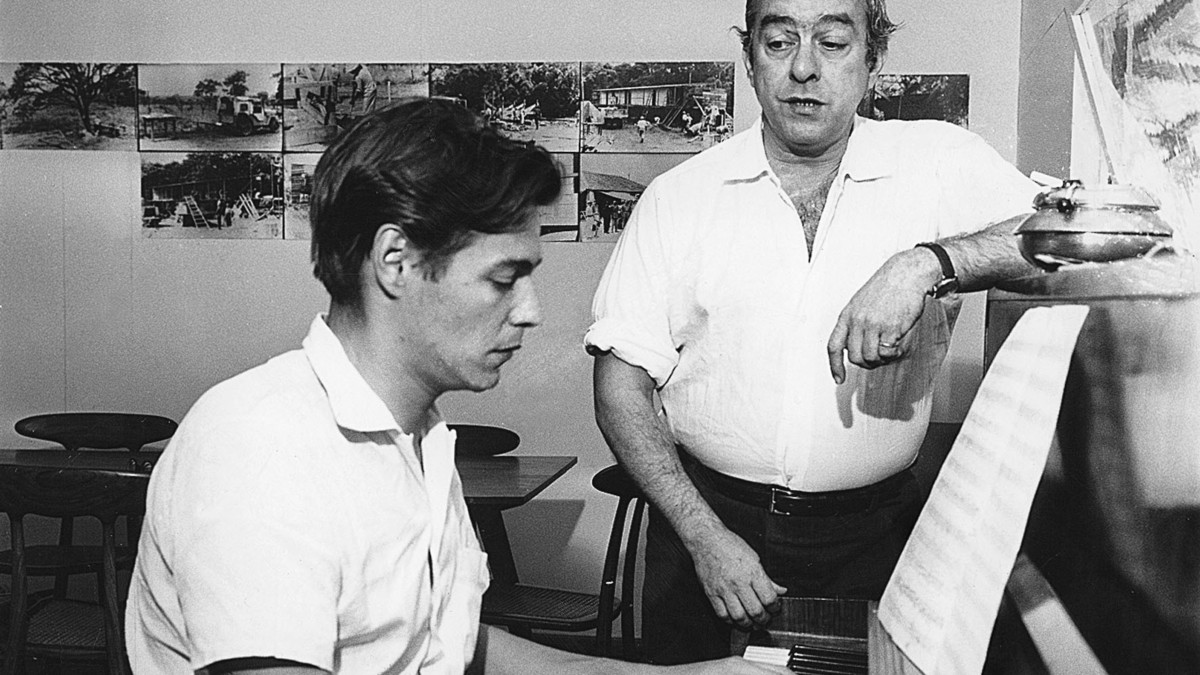The Bossa Nova was officially born on July 10, 1958, when João Gilberto recorded the song ‘Chega de Saudade’ at Odeon studios. The arrangements were made by Antonio Carlos Jobim, who also directed the orchestra. “That new way of singing and playing by João Gilberto brightened everything up,” summarizes writer Ruy Castro.

The album “Canção do Amor Demais,” recorded three months earlier in April 1958 by Elizete Cardoso, was not what introduced Bossa Nova, despite the opinion of a minority. Despite the repertoire, entirely composed of songs by the duo Tom Jobim and Vinícius de Moraes, and João Gilberto’s guitar performance in two tracks, including “Chega de Saudade,” Elizete, a highly prestigious singer, did not have the musical profile in line with the changes that were pulsating within those songs.
Tom had composed what he intended to be a chorinho in two parts at his family’s country estate. Upon returning to Rio, he sought out Vinícius de Moraes, with whom he had just composed the songs for the play “Orfeu da Conceição,” staged in the same year, 1958, at the Municipal Theater, to whom he showed the music he composed at the estate.
In a chronicle published in the newspaper Última Hora, ten years later, Vinícius reminisced about the encounter with his partner:
“Tom repeated it about ten times. It was completely charming, with a melancholic and plaintive fabric, and quite a slow ‘chorinho’ in its spirit. I was taken with the melody and was always humming it at home, waiting for a cue for the poetry. That, indeed, seemed to me like a really new music, original, entirely different from everything that came before it but as Brazilian as any choro by Pixinguinha or samba by Cartola. A samba that twisted and turned, where each measure was a complaint of love, each note a longing for someone far away.
“But the lyrics didn’t come. Every so often, I sat at my desk in front of the window facing the Corcovado and tried. But it didn’t come. I think that in all my life as a lyricist, I’ve never been beaten like that. I made ten, twenty attempts.
“There was one time when I considered the samba ready, except for the last two verses in the first part, which I knew, but they didn’t fit the music, in terms of syllable to syllable relation. I was getting furious because Tom, although he didn’t call complaining about anything, was waiting for the result.
“One morning, after the beach, suddenly the resolution came. I was so happy that I even shouted for joy, which greatly startled my two little daughters. I sang and resang the samba, paying attention to every detail, the color of the words corresponding to the music, the accentuation of the stresses, the breathing issues within the verses, everything.
“I wanted, after the sambas of Orfeu, to present to my partner a lyric worthy of his new music because I felt it was new, moving in a direction that I couldn’t name but whose name was implicit in the creation. It was truly the birth of bossa nova, only asking, in its interpretation, for the division that João Gilberto would discover soon after.
“I titled it ‘Chega de Saudade,’ using one of its verses. I called Tom and jumped to his apartment. The young maestro sat down at the piano, and I sang the samba to him two or three times, and he said nothing. Then, I saw him take the paper, place it on the piano stand, and sing it himself. And soon, call his wife in a vibrant tone, ‘Teresa!'”.
Reference: CASTRO, Ruy. Chega de saudade. Brazil: Companhia das Letras, 2016.

Matheus Araújo
Matheus Araújo is the founder and editor of Brazilian History. Born in Rio de Janeiro and holding a degree in Advertising and Marketing, his passion for history led him to enroll at the Federal University of the State of Rio de Janeiro, where he is currently pursuing a degree in History Education.
